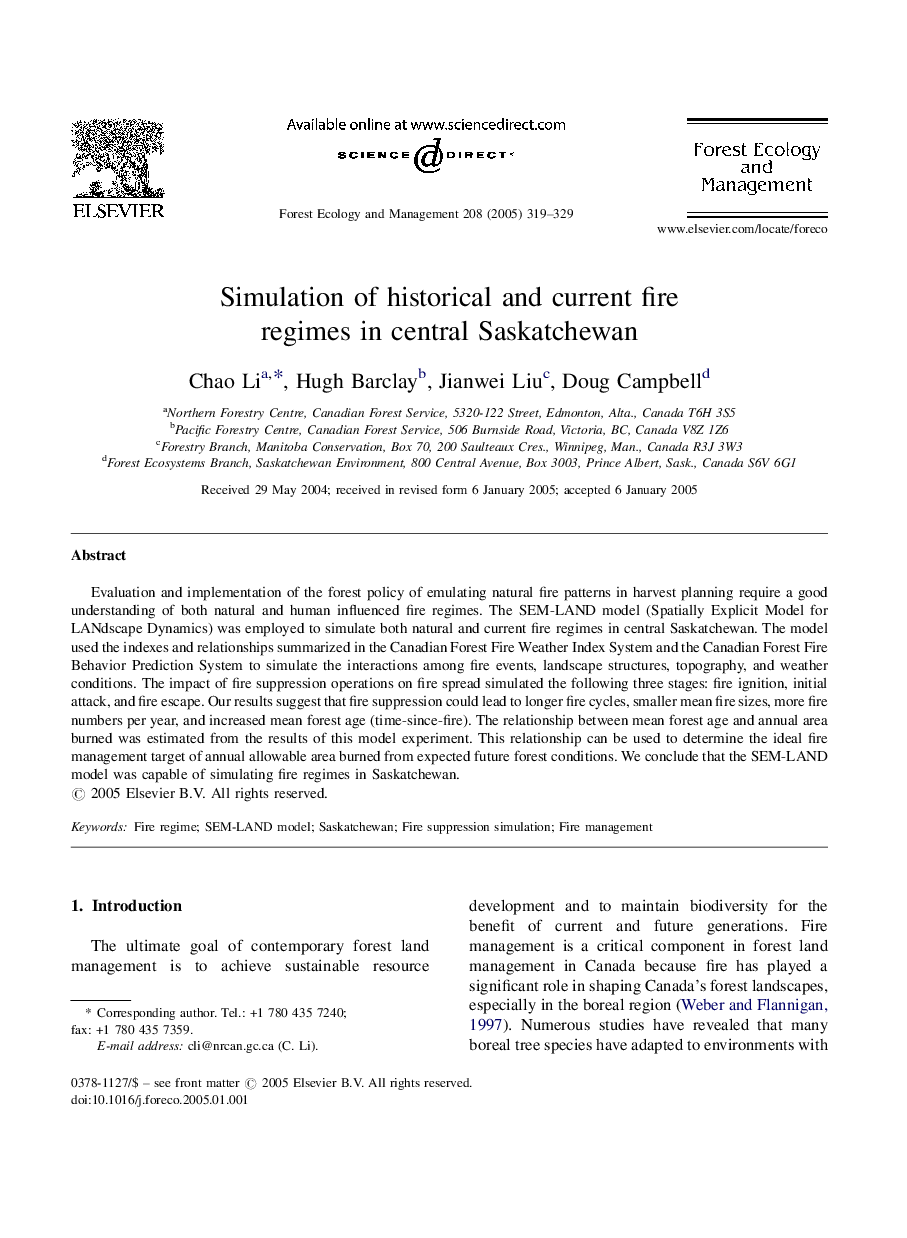| Article ID | Journal | Published Year | Pages | File Type |
|---|---|---|---|---|
| 9620425 | Forest Ecology and Management | 2005 | 11 Pages |
Abstract
Evaluation and implementation of the forest policy of emulating natural fire patterns in harvest planning require a good understanding of both natural and human influenced fire regimes. The SEM-LAND model (Spatially Explicit Model for LANdscape Dynamics) was employed to simulate both natural and current fire regimes in central Saskatchewan. The model used the indexes and relationships summarized in the Canadian Forest Fire Weather Index System and the Canadian Forest Fire Behavior Prediction System to simulate the interactions among fire events, landscape structures, topography, and weather conditions. The impact of fire suppression operations on fire spread simulated the following three stages: fire ignition, initial attack, and fire escape. Our results suggest that fire suppression could lead to longer fire cycles, smaller mean fire sizes, more fire numbers per year, and increased mean forest age (time-since-fire). The relationship between mean forest age and annual area burned was estimated from the results of this model experiment. This relationship can be used to determine the ideal fire management target of annual allowable area burned from expected future forest conditions. We conclude that the SEM-LAND model was capable of simulating fire regimes in Saskatchewan.
Related Topics
Life Sciences
Agricultural and Biological Sciences
Ecology, Evolution, Behavior and Systematics
Authors
Chao Li, Hugh Barclay, Jianwei Liu, Doug Campbell,
